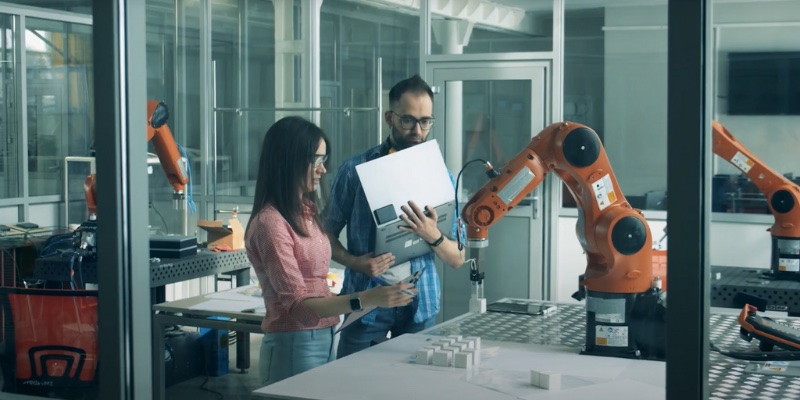What if you could help map the ocean floor or the surface of a distant planet without ever learning to code? That’s now a real possibility thanks to new machine-learning (ML)—a sister component of artificial Intelligence (AI)—exploration and problem solving innovation from neurothink.
The company is taking ML mainstream by cutting complexity while improving access to powerful computing resources. It’s also simplifying the creation and training of new models and making AI accessible to people without coding experience.
“We like to say that we make machine learning radically accessible,” said Brian Rogers, CEO and founder of neurothink, who launched the company’s ML platform in May 2021.
Overcoming AI/ML Challenges
ML is rapidly becoming a must-have capability in next-generation apps. Yet enterprises eyeing ML for everything from enhanced healthcare to automated transportation to clean energy are running into a familiar roadblock: lack of talent. AI development is costly, and better tools are needed. According to IBM’s Global AI Adoption Index 2022, the top three things hindering successful AI adoption are limited skills, expertise or knowledge (34%), high costs (29%) and the lack of tools or platforms to develop models (25%).
Neurothink is confident it can address all three challenges simultaneously. Its platform, which makes ML accessible to people without coding experience, is finally delivering on the promise of the “democratisation of AI” which others have been doing with varying degrees of success.
Low-code/no-code solutions like neurothink support armies of citizen developers, or people with little code-writing experience who engage in development in addition to their regular jobs. These tools offer a natural, easy-to-use, GUI that masks the complexity of the underlying technology from the user. Not only does this accelerate time to market of new applications, but it dramatically reduces development cost as well.
“Neurothink is set to disrupt the status quo, in which advanced ML capabilities are available only to a privileged few,” said Rogers when the firm emerged from stealth mode.
“Virtually everybody's doing the same thing in the ML space,” he added. “We felt that we could build a much better experience and provide much greater accessibility to the platform.”
Multi-Cloud Is Essential
Neurothink depends on a number of VMware solutions, including VMware Tanzu, VMware Kubernetes Grid, VMware Carbon Black and Bitfusion. “The beauty of that is we have a one-stop shop for everything we need to put together our platform,” said Charles Donly, chief operating officer at neurothink. “With that, we can then make sure it's secure all the way from the hardware into the container.”
The multi-cloud element was essential to neurothink’s vision. Most major cloud service platforms offer AI and ML tools, but they’re complex and difficult to use. Also, what teams do on one cloud platform doesn’t translate easily over to other platforms, so teams can suffer from vendor lock in.
Neurothink was designed from the ground up to be a ML platform. As an end-to-end environment with tools to build, train and deploy models, it is both simple enough for beginners and flexible enough for ML professionals familiar with multi-cloud environments.
In 2022, neurothink had a staggering 4 petaflops of peak ML compute resource available, making for spectacular compute speed, according to Donly. Neurothink encourages users to quickly develop robust ML models on an efficient, low-cost and powerful multi-cloud platform.
Because security is always a concern for developers, the company has engineered end-to-end API-based security delivered on its own secure hardware and has engaged key partners like VMware that have unique intellectual property to solidify security. The reliability of the platform is also absolutely essential to those organisations building ML models on it.
Donly said, “We've been in discussions with partners where they're trying to map the underwater (environment of the) ocean. Or they want to model being on another planet. And then, there’s clean energy. To be able to (build) windmills out in the water takes a lot of research and exploration. Their reliability on the ML platform is absolutely paramount.”
Building a Community
Neurothink use isn’t limited to enterprises. It democratises innovation across a broad swath of humanity.“Innovation is about taking things that exist today, finding an unmet need and then delivering on that,” said Donly. “With neurothink, everybody from hobbyists to budding university students to corporate data scientists can get on and do their best work as quickly as possible.”
A big part of neurothink’s mission is to use its platform to connect ML developers of all kinds and all walks of life so they can collaborate and learn from each other.
“(We envision) building a strong community so that people can speak to one another about different projects and collectively start to work on solving key problems,” said Rogers.
For example, universities have been working with ML for quite some time now. “With neurothink, we are really building one, all-encompassing platform that allows a professor and the student to be able to spin up projects much faster than they've done in the past,” said Rogers.

